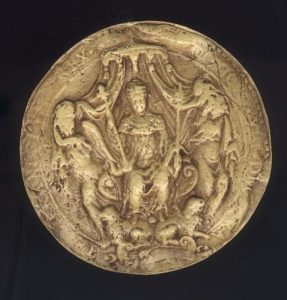The Lutherans : from the very first church service to regular services of worship
In October 1626, a sensational proclamation, signed by twenty Scandinavian and German princes and ambassadors sent as diplomats to Paris, declared that a Lutheran service including the celebration of Holy Communion, had been held in one of theirembassies.The service was celebrated by the Swedish pastor Jonas Hambraeus
Rather than an act of faith, this was sheer provocation, since all Lutherans living in Paris were invited to come to “the next service”. This invitation was not put into effect until 1635 when Hugo Grotius was installed as the permanent Swedish legate in Paris. He moved into the embassy on the Quai Malaquis and opened his « chapel » – in fact the drawing room of the embassy from which the furniture had been removed – while appointing Hambraeus as pastor. From that time on a service was held every Sunday, open to all Lutherans living in Paris.
Who were the Lutherans living in Paris ?
The pastor’s register listed the names of those who had taken communion in the Swedish chapel from 1635 to 1680. They were mostly foreigners : at first kings and princes from the German empire and Scandinavian countries, special ambassadors and high ranking soldiers who had been sent to France. But soon they were no longer the only ones : many German and Swedish students, studying at the Sorbonne, attended worship. Art apprentices likewise attended, such as the portrait painter Lundberg , the painter Ehrenstrahl and the medal die-sinker, Meybusch.
Others were German immigrants : poor people who had fled their country ravaged by the Thirty Years War. (1618-1648). They had come to Paris without any official papers or any belongings – they did not speak French and did not know whom to turn to for work. They found a helping hand at the Swedish chapel where pastor Hambraeus welcomed them and where they attended Sunday services and Hambraeus wrote their names down in his book. After the service, older members of the church, by now well integrated into Parisian society, took them in charge, giving them somewhere to live and helping them to find work. In this way, week after week, a small German community was formed.
As from 1679, in order to avoid the threat of dispersion, the Swedish legate Nils Bielke officially adopted this community by giving it the statute of an official embassy community. Their protection and financing were thus guaranteed by the king of Sweden and – since they were on foreign soil – they were able to celebrate religious services without being troubled by local authorities. The ambassador called a German pastor named Cephalius to take over the leadership of this community. He had been authorised to preach and keep the official registers in German. However, none of this was in accordance with usual diplomatic practice.
The difficulties of living in the predominantly Catholic city of Paris
Although they were able to practise their faith without any problem, these foreign Lutherans found it difficult to live in a predominantly Catholic Paris which often showed signs of xenophobia.
Corporation statutes had strict regulations for foreigners, thus slowing down their professional progress. It was very difficult for these Lutherans to get married, as King Louis XIV had expressly forbidden his subjects to marry anyone else than a French Catholic, or to go abroad to get married without his special permission.
In hospitals, all of which were run by Catholic congregations, pressure was put on them to convert to Catholicism before getting medical treatment. From 1685 onwards, as the Protestant churchyard in the rue des Saints-Pères had been destroyed, burials could only take place at night along the banks of the Seine.
Without the financial help from Sweden and the care given by the deacons of the Swedish chapel, the little group of Lutherans would not have survived in Paris.









